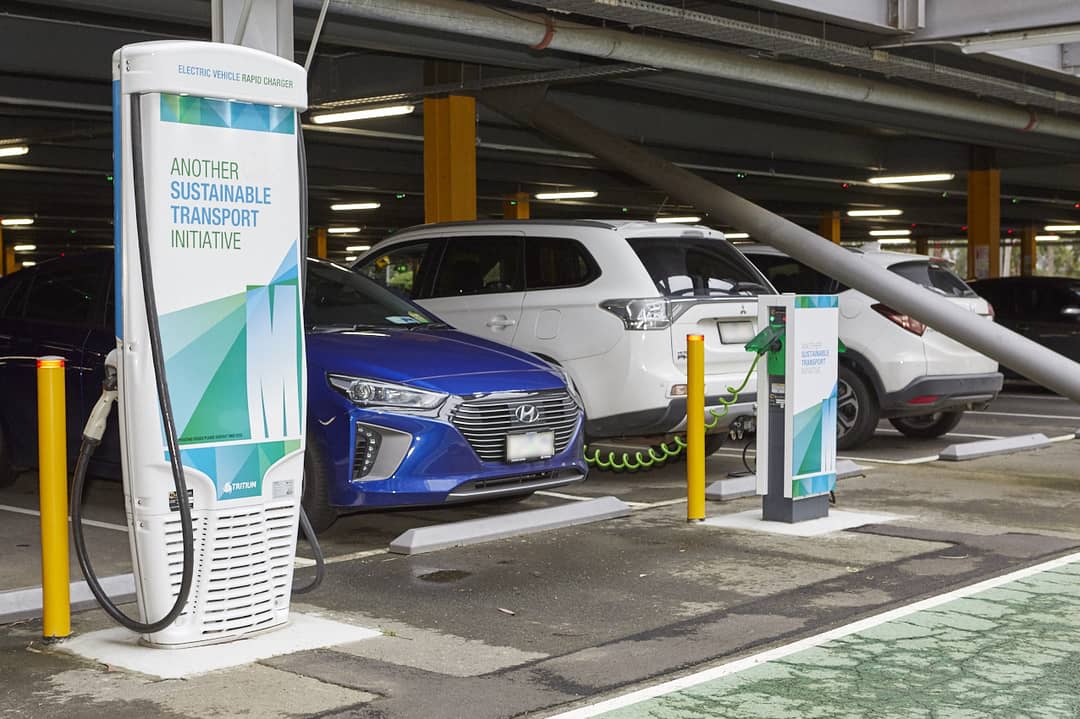Transport in 2021 accounts for 17% of Australia's total emissions, and has shown an upward trend (13%) on 2005 levels. As net zero commitments ramp up across the globe, governments and organisations need to consider how to transition transport systems to zero emissions. While technological solutions exist, there are challenges and barriers to implementation.
-
Roger Dargaville
Deputy Director, Monash Energy Institute; Senior Lecturer, Resources Engineering, Department of Civil Engineering
-
Rachel Lynskey
Project Officer, ClimateWorks Australia, Monash University
-
Reeta Lad
Manager, Parking and Traffic, Monash University
The Victorian government's Zero Emissions Vehicle (ZEV) Roadmap focuses on removing barriers to the uptake of ZEVs, and leveraging opportunities associated with the impact of this technology transition.
We need to change the way our cities look
Rachel Lynskey, Cities Project Officer for ClimateWorks Australia, focuses on embedding net zero emissions pathways in key urban sectors, including transport and infrastructure.
She says that to implement clean air zones, like those in London and Birmingham, we need to "[shift] our vehicles to cleaner and zero emission options".
Research and analysis conducted by ClimateWorks shows that 50-75% of new vehicle sales need to be electric vehicles by 2030 in order to reach net zero emissions by 2050. Currently, just 1.5% of new vehicle sales are electric.
She suggests that while we look to new pricing models to make electric vehicles (EVs) more affordable, we also need to acknowledge other important elements such as infrastructure, education, and city design, to encourage EV uptake in Australia. Consideration must also be given to how the grid will manage the increased charging requirements for these vehicles.
"We urgently need to incentivise EVs, because moving away from fossil fuel-powered vehicles is important," says Dr Roger Dargaville, Director of the Monash Energy Institute, and an expert in energy systems and climate change.
However, with a large uptake of EVs, the revenue acquired from fuel tax decreases, which is problematic.
An effective solution would instead see a decrease in the upfront cost of EVs to encourage uptake, while implementing a system that requires drivers to pay a fee to use certain roads, ensuring revenue is still generated to fund roads. The system would act similarly to a tollway, and target congested areas rather than rural roads.
Planning for the grid challenge
EVs can draw different amounts of power off the grid depending on charger type and networks used (low voltage or medium voltage).
A scenario where one million cars are plugged into the grid in the early evening, simultaneously charging, could result in a cumulative total of seven gigawatts of instantaneous demand, putting extreme pressure on the grid.

Instead, we require a system where EVs charge based on the availability of renewable energy, where the system can adapt and be flexible to both daytime and nighttime charging.
Failure to plan for EV charging will result in higher energy costs and a less efficient system.
"If EV charging is done in a smart way, then we'll have efficient use of the existing energy system infrastructure, says Dr Dargaville.
Better use of the transmission and distribution system, and of the generation capacity available, will result in lower energy costs.
This will require standards for charging stations where we have software and communications to the market operator that will facilitate responsive EV charging based on the availability of energy on the grid.
"We want the charging patterns to follow availability of renewable power on the grid," says Dr Dargaville. This will ensure that "EVs actually become a net benefit on the grid".
During peak events, EVs plugged into a charging station have the potential to return electricity to the grid.
Dr Dargaville says that "[if] we look at the problem of seven gigawatts being drawn off the grid simultaneously from a million vehicles, you could alternatively put seven gigawatts onto the grid from the same million vehicles".
Monash moves forward with net zero ambitions
To encourage EV vehicles uptake, Monash University has so far installed five electric vehicle charging stations on campus, with more on the way.
Reeta Lad, Manager of Parking and Traffic in the Building and Property Division, says part of the University's plan to reach net zero emissions also involves "reduc[ing] the number of single-occupant vehicles travelling to campuses".

Research is underway to implement technology for Monash shuttle buses to become an on-demand service to areas with high vehicle usage. Such technology will allow services to be scaled up or down based on demand.
To further reduce transport emissions at Monash, the University plans to expand carshare services to move from the traditional carshare vehicles it currently provides, to EVs customers can use for both business and personal travel.
Analysis of hydrogen feasibility at Monash highlights the use of energy-intensive vehicles, such as waste services vehicles, and the potential to shift to electric or hydrogen-fuelled vehicles.
"[Monash] would like to implement low-emissions shuttle buses in the form of electric or hydrogen-fuelled vehicles," she says.
Further, the sustainable transport for Monash will see the transition of all vehicles operating on campus, such as maintenance vehicles, to low-emission vehicles.
Flexible parking options
At the start of 2020, Monash introduced a pay-as-you-use parking model to override annual parking permits, promoting staff and students to make daily choices on transport modes.
"Our staff and students now no longer lock themselves into driving for a full year, but instead make a daily choice on their travel modes," Lad says.
"The University has been pretty instrumental in trialling new and innovative transport services," says Priya Galketiya, Lead Engineer of the Net Zero Initiative at Monash.
Two bike arrival stations are available at the Monash Clayton campus, where students and staff can access lockers, bicycle parking hoops, and shower facilities.
"We actively prioritise cyclists and pedestrians by including bike lanes, pedestrianising our campuses, and shifting car parking to the corner of our campuses", Lad says.
Electric scooters have been trialled on campus; however, changes in current legislation are required to implement this mode of on-campus transport.
An unexpected opportunity in the transport sector
The work-from-home restrictions throughout the pandemic have presented opportunities for transport emissions reduction.
The decreased travel demand through lockdowns and restrictions has normalised employees working from home on a more regular basis, even post-pandemic. This makes for less congestion across our network, and fewer emissions across the transport sector.
However, data shows people are more hesitant to return to shared transport post-pandemic, including public transport and micromobility options such as bikeshare services. These shared transport modes may be replaced with private vehicle use, which could increase the strain on our road network.
"We really need to look at other options, and how we can rebuild public trust in using shared public transport modes," says Lynskey.
"We can learn from these kinds of crises, and implement [transport solutions] in a more long-term way. [There are] real opportunities to draw on [here]," she adds.






